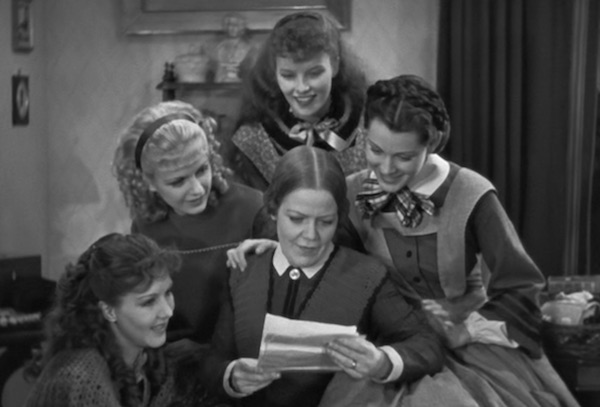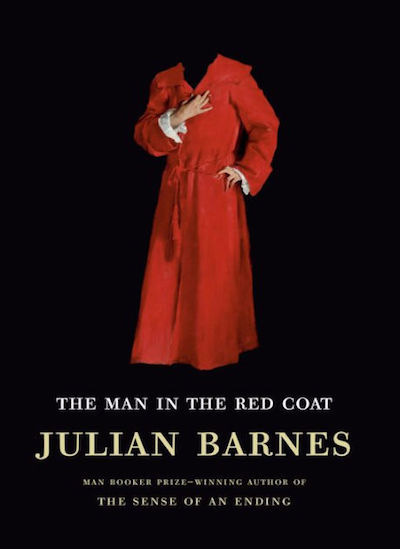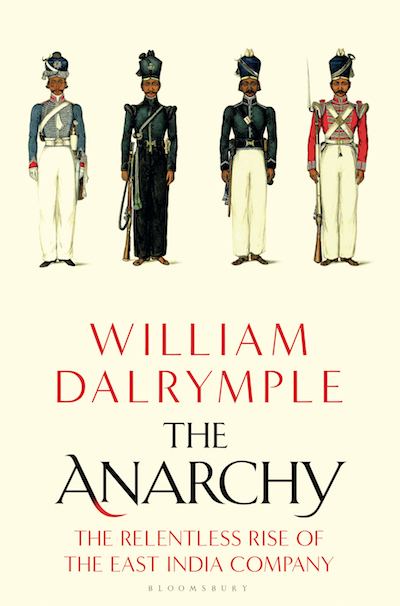Favorites of 2020: Live music
Miah Persson as Fiordiligi and Anke Vondung as Dorabella in the 2006 Glyndebourne production of Così fan tutte. Image source: DigitalTheatrePlus.com
While the experiences of reading books, watching films and listening to recorded music have been essentially unchanged by the pandemic, live performances in my area stopped abruptly in mid-March and have not yet resumed. And so rather than select my favorite live performances from among the four or five in-person concerts we attended in the first two months of the past year, I thought instead I'd take a look at four different responses to the shutdown.
Opera houses such as Glyndebourne, SF Opera and the Met, as well as many other performing arts groups, responded rapidly to the cancellation of live performances by streaming past productions online for free; I'll discuss these at the end of the post. Although these streaming videos are an enjoyable stopgap, they are clearly not a way forward. So I will focus first on three companies that have responded to our current circumstances as a creative opportunity:
Ars Minerva Artistic Director Céline Ricci. Photo: Martin Lacey Photography. Image source: sfgate.com
Ars Minerva: Cocktails & Chit-Chat. Ongoing; free with a suggested donation.
Ars Minerva, the Bay Area group led by the super-resourceful Céline Ricci, inventively revives Baroque operas that have lain unperformed in archives since their premières. Their sixth opera production, Carlo Pallavicino's Messalina (1679), was planned for this fall but has now been rescheduled for 2021.
Ars Minerva's online series Cocktails & Chit-Chat is in keeping with Ricci's philosophy of making a virtue out of necessity. It's low-tech and home-produced, but all the more spontaneous and appealing as a result. Each 30-minute episode features informal talks, interviews, and performances centered on a theme. Topics have included backstage insights, underperformed composers such as Antonia Bembo, Joseph Bologne, and Francesca Caccini, and the role of Naples in 17th- and 18th-century operatic culture. The upcoming episode on 9 December will be a preview of Messalina, with highlights performed by some of its featured singers and instrumentalists. As an added bonus, Ricci provides a delicious (sometimes too delicious) cocktail recipe to accompany each episode; Messalina's Cocktail is utterly addictive, and worth the suggested donation all by itself.
Ars Minerva has big plans for the future. After Messalina's modern première there will be a collaborative performance with SF Girls Chorus of Juditha Triumphans, an oratorio written by Vivaldi for the women of Venice's Ospedale della Pietà. Once again Ricci's group provides a model of creativity, innovation, resourcefulness and sheer enjoyment that arts organizations with budgets many times its size would do well to emulate.
Tiffany Townsend as Léontine in The Anonymous Lover. Photo: Larry Ho. Image source: LAOpera.org
Los Angeles Opera: The Anonymous Lover (L'Amant Anonyme, 1780), composed by Joseph Bologne, Chevalier de Saint-Georges; libretto by François-Georges Fouques Deshayes ("Desfontaines") after a play by Stéphanie Félicité de Genlis; free stream available until 29 November.
Another approach has been taken by LA Opera, which recently offered a socially distanced online production of The Anonymous Lover (L'Amant Anonyme), the only opera that survives in full by Mozart's contemporary Joseph Bologne (see Black Beethoven and the Black Mozart). Performed by singers from LA Opera's Young Artist Program to a prerecorded orchestra conducted by James Conlon, the production offered a projected mis-en-scène that largely left the characters floating in undefined spaces, and in which neither their identities nor the details of their relationships were ever made fully specific. Nonetheless, the fresh voices and sparkling music were sheer delight. The widowed Léontine (Tiffany Townsend) must decide whether to remain unattached or respond to her anonymous admirer, who turns out to be her steadfast friend Valcour (Robert Stahley). Each has an advisor: Léontine's is her down-to-earth companion Dorothée (Alaysha Fox), while Valcour's is his philosophical friend Ophémon (Michael J. Hawk). Conlon interpolated a powerful scena from Bologne's opera Ernestine which helped give weight to Léontine's emotional dilemma, as did the lovely and moving dance interludes choreographed by Andrea Beasom and featuring herself and Daniel Lindgren.
The Anonymous Lover is a gem, and LA Opera chose the perfect means to showcase both a too-little-known composer and its own young artists. The LA Opera's in-person season resumes (we hope) next fall, but I'll point out that there's room for another online production between now and then.
Paula Murrihy in Ariodante.
Royal Opera House: Ariodante in concert. Live 20 November 2020; stream available on demand until 20 December; tickets £10/US$10.95.
This performance was a homecoming of sorts for Ariodante, which premièred in January 1735 at the Theatre Royal in Covent Garden, the original theater occupying the site of the current Royal Opera House. It was presented in a semi-staged version with an excellent cast accompanied by a modern-instrument orchestra (with the addition of harpsichord and theorbo) scaled down to Baroque proportions and conducted by early-music specialist Christian Curnyn. The presentation is straightforward: costumes are simple and modern, singers interact but at a distance, and there are (almost) no props. Some atmosphere is created in a garden scene in Act I when the camera pans over the empty theater: the ceiling lights look like twinkling stars, while the lights illuminating the boxes stand in for garden lanterns. In Acts II and III deep blue stage lighting indicates the fall of night and the growing darkness of the plot.
Baroque operas have a not entirely undeserved reputation for convoluted stories. Ariodante, though, is unusually straightforward, and Handel introduces the plot with dramatic and musical economy. By the beginning of the third aria, about 10 minutes into the opera, we understand that the knight Ariodante (Paula Murrihy) is loved by the princess Ginevra (Chen Reiss), who is lusted after by the duke Polinesso (Iestyn Davies), who is loved by Ginevra's lady-in-waiting Dalinda (Sophie Bevan). We also know that Polinesso is planning to exploit Dalinda's feelings in a scheme to supplant Ariodante, marry Ginevra and become heir to the throne. Over the next three hours this plot and its disastrous outcomes unfolds. (The action is further compressed in this performance by some musical cuts, primarily at the ends of Act I and II.)
Ariodante is one of Handel's greatest operas, and the second act features one moving aria of grief and loss after another. Ariodante despairs over what he believes is Ginevra's unfaithfulness, the King (Gerald Finley) mourns Ariodante's apparent suicide, and Ginevra, disgraced, alone and bereft, yearns for her own death.
The music is demanding: the 1735 cast included the brilliant castrato Giovanni Carestini as Ariodante (you can hear the music that was written for him by Handel and other composers on Philippe Jaroussky's album Carestini: The Story of a Castrato, one of my Favorites of 2011). Paula Murrihy will not replace my memories of Lorraine Hunt and Anne Sofie von Otter in this role, but Murrihy acquits herself honorably. Ginevra was sung in 1735 by Anna Maria Strada del Pò, for whom Handel wrote many parts including Angelica in Orlando (1733) and the title roles in Partenope (1730), Alcina (1735), Atalanta (1736), and Berenice (1737). Soprano Chen Reiss proved fully equal to both the joy and deep pathos of Ginevra's music. As the villain Polinesso, Iestyn Davies sang a role originated by a contralto, Maria Caterina Negri; Davies sang with fleetness and musicality, if not quite the sense of vocal menace summoned by, for example, Ewa Podleś on the Marc Minkowski recording. Gerald Finley in the role of the King brought a sense of command (both vocal and dramatic), as well as deep anguish when his obedience to the law forces him to condemn his own daughter.
Don't be daunted by the 3½-hour runtime: nearly an hour of that is taken up by the 15-minute "stream will begin soon" announcement and two 20-minute intermissions, all of which can easily be skipped.
Cesare (Sarah Connolly), Cleopatra (Joélle Harvey), and members of the Glyndebourne Chorus in Giulio Cesare. Photo: Glyndebourne.com
Glyndebourne Open House, SF Opera is ON, Nightly Met Opera Streams (all ongoing; free with suggested donation)
As with most things opera, Glyndebourne got this right. Glyndebourne launches each new streaming offering with a synchronous watch party, and then keeps the stream available for seven days (a thoughtful accommodation for those of us who can't always fit watching a complete opera in one sitting into our at-home schedules).
This summer Glyndebourne featured 15 different streamed operas, fittingly starting with the latest productions of the three Mozart-Da Ponte operas which initiated the Festival Opera in the 1930s. Of these the highlight was Nicholas Hytner's handsome and incisive 2006 Cosi fan tutte (see Was Mozart a misogynist?). Also included in the series were the 2010 revival of David Hockney's Rake's Progress from 1975, Jonathan Kent's 2009 Fairy Queen (the one with the bonking bunnies), David McVicar's 2005 Giulio Cesare, Richard Jones's 2014 Der Rosenkavalier (see the post Glyndebourne for my reviews of their 2018 revivals), Robert Carsen's 2011 boarding-school Rinaldo, Laurent Pelly's playful 2012 L'heure espagnole and L'enfant et les sortilèges, and Keith Warner's film-noir 2018 Vanessa. As this partial list suggests, Glyndebourne's series featured a well-balanced mix of reimagined old favorites and unusual repertory, always in striking, thoughtful productions (even if the director's ideas, as in Michael Grandage's 1960s-era The Marriage of Figaro or the decadent fin-de-siècle Der Rosenkavalier, were not always completely welcome). Glyndebourne's latest online offering is Melly Still's 2009 Rusalka, available beginning 27 November.
SF Opera's free online offerings are available for too short a time (typically from Saturday morning to Sunday night), and have not been nearly as varied as Glyndebourne's. So far, of the 13 productions made available (including this weekend's L'Elisir d'amore), three have been by Verdi, three by Donizetti, and two by Puccini. With only two exceptions (Mozart's Marriage of Figaro and Jake Heggie's Moby-Dick), all of the rest of the operas are from the 19th century. This feels like a missed opportunity to showcase opera's diversity of styles, attract new fans and offer existing ones a risk-free opportunity to broaden their experience.
The Metropolitan Opera has approached its free online streaming with characteristic overkill. It has been streaming a different opera every night, and each stream is available for only 24 hours. For those of us fortunate enough to still have jobs or who want or need to spend time on other activities like romantic partners and children, having only one evening to watch each opera means that inevitably we miss most of what's on offer. You would never design an in-person season this way, and it's an equally bad idea online. If the short window of availability is meant to encourage us to sign up for the subscription service Met Opera On Demand, I haven't been encouraged.
Update 2 December 2020: The first version of this post overlooked a key live music event, streamed online: a performance of Richard Strauss' Metamorphosen (Metamorphoses, 1946), in a socially distanced concert at the Philharmonie de Paris on 28 May 2020. By then the vast scope, the likely duration, and the terrible toll of the pandemic were becoming clearer. Strauss' great elegy, which was written in the final months of the Second World War and which ends in the Funeral March theme from Beethoven's Third Symphony, felt like a fitting way to mourn all that had been and would be lost. That the musicians came together at the invitation of violinist Renaud Capuçon to play this music in an empty auditorium during a raging pandemic—this was one of the first live events since the shutdown of concert halls in March—was paradoxically a gesture of courage, faith, hope, and solidarity.
Renaud Capuçon et ses amis jouent Richard Strauss
Last time: Favorites of 2020: Recordings














































